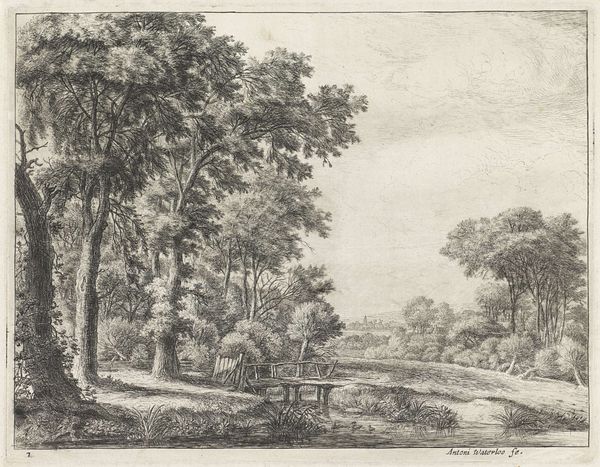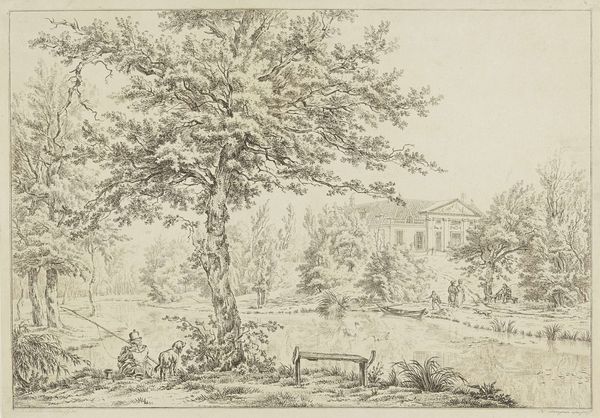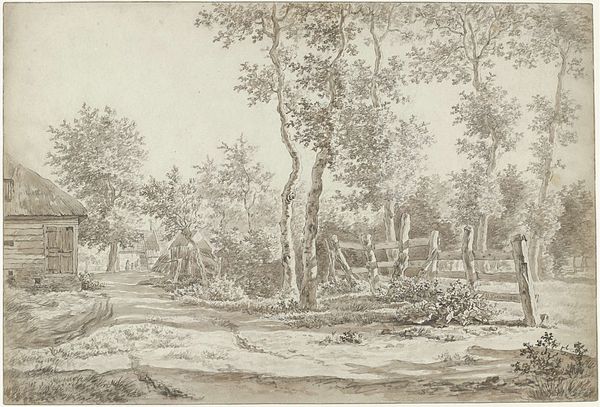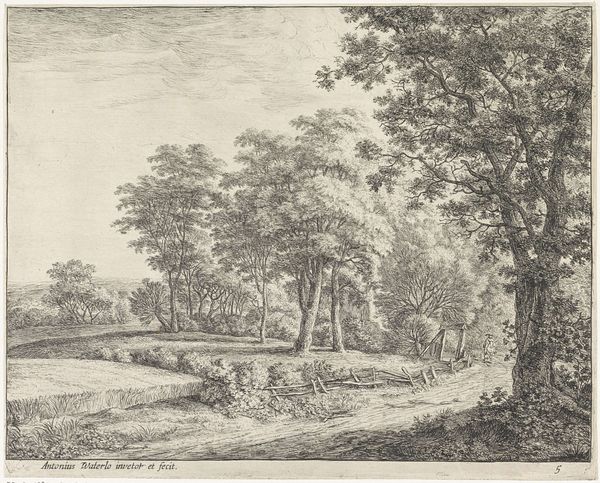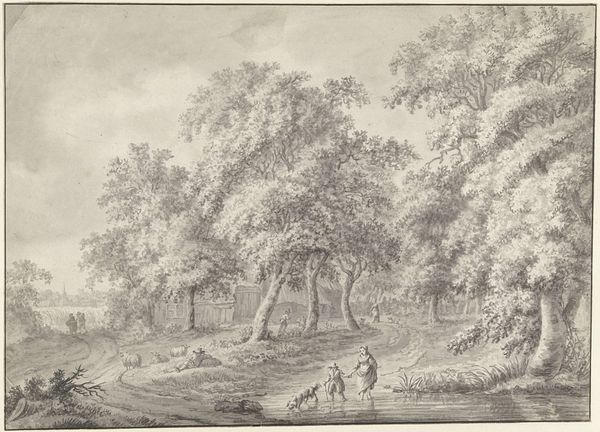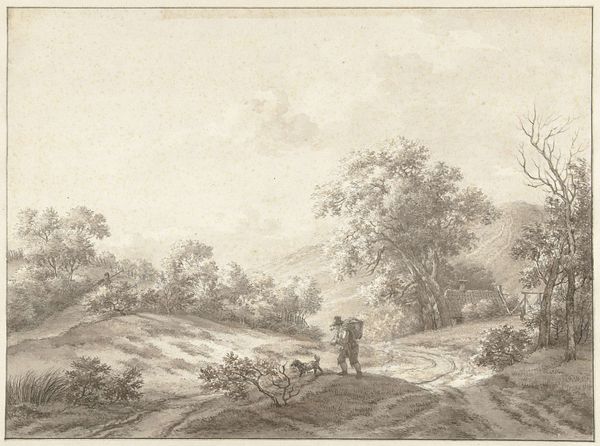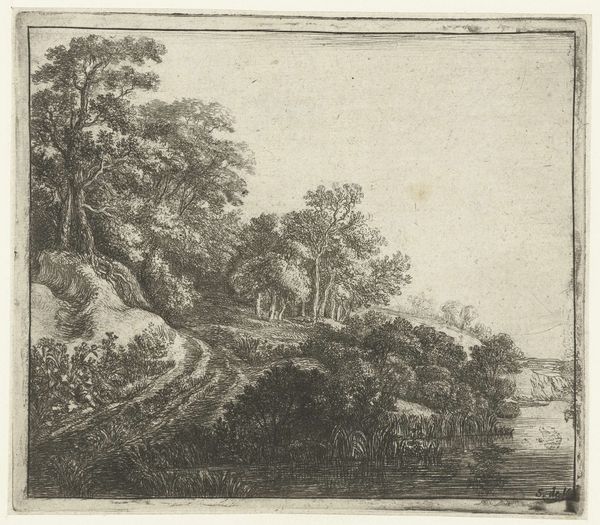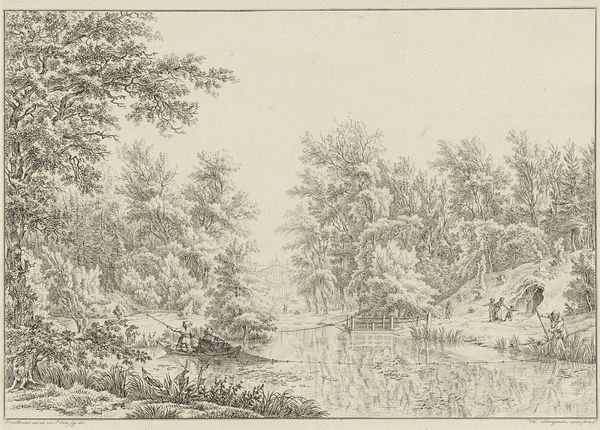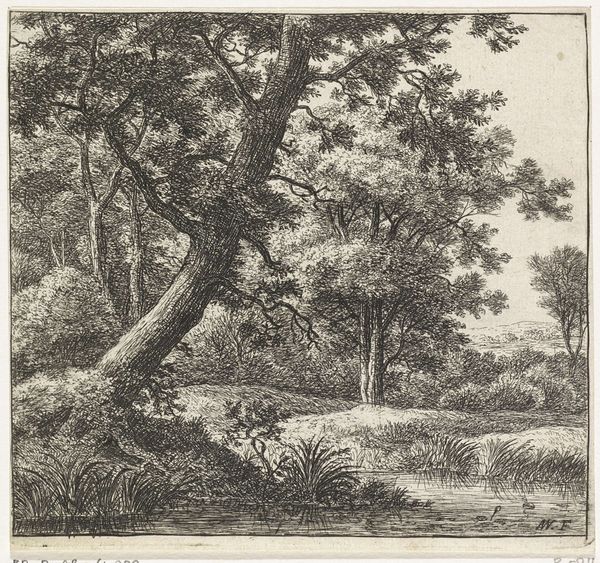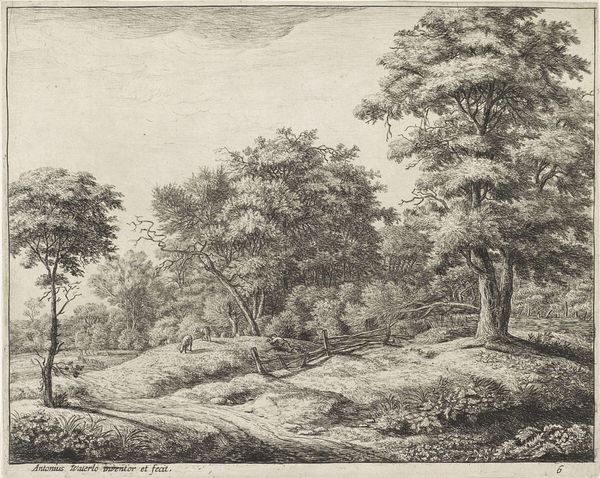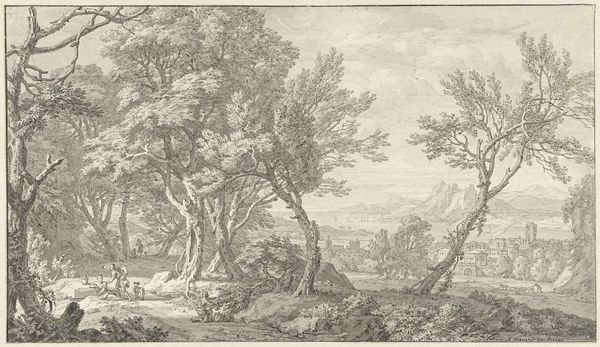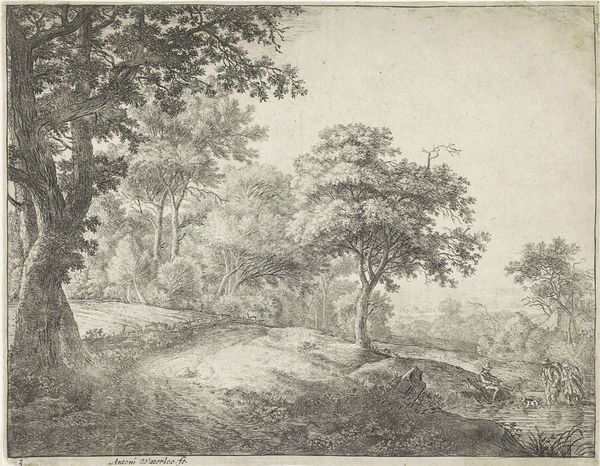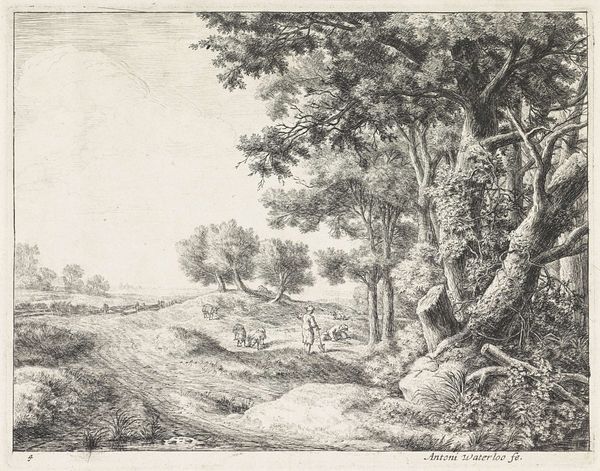
etching
#
neoclacissism
#
etching
#
landscape
#
etching
Dimensions: height 386 mm, width 548 mm
Copyright: Rijks Museum: Open Domain
Editor: This is Hendrik Schwegman's "Cattle at the Elswout Estate near Overveen", an etching from 1796. The details in the landscape are incredible. I’m struck by how the artist rendered this scene, with all the different textures of foliage and the serene depiction of cattle. What are your initial thoughts on this piece? Curator: The etching medium itself speaks volumes. Etching allowed for mass production and distribution. This print is not just about representing nature, but about the increasing commodification of landscape in the late 18th century. Editor: Commodification of landscape? Could you elaborate? Curator: Think about the paper, the ink, the labor involved in creating this print. These were all raw materials transformed through human effort. This scene, once experienced only by the wealthy landowners, became accessible, reproducible, a commodity to be consumed by a wider audience. The act of etching transforms a unique, lived experience into a reproducible object for the burgeoning art market. Does this production process impact how you view the seemingly tranquil landscape portrayed? Editor: It does change it! I was so focused on the serene depiction of nature, that I didn’t even consider the implications of producing and distributing an image like this. Curator: Exactly! Look closely at the etching technique. How does the quality of the line work or the layering contribute to a sense of value or perhaps even exploit the laborers involved in the printing process? Editor: It makes you question how this seemingly simple scene plays into much bigger things. I see the landscape and pastoral life…but the means of its creation reveal the influence of labour and a system of artistic consumption. Curator: Precisely. An etching of a peaceful pasture on an estate then becomes a window into 18th-century economics and modes of artistic production.
Comments
No comments
Be the first to comment and join the conversation on the ultimate creative platform.
